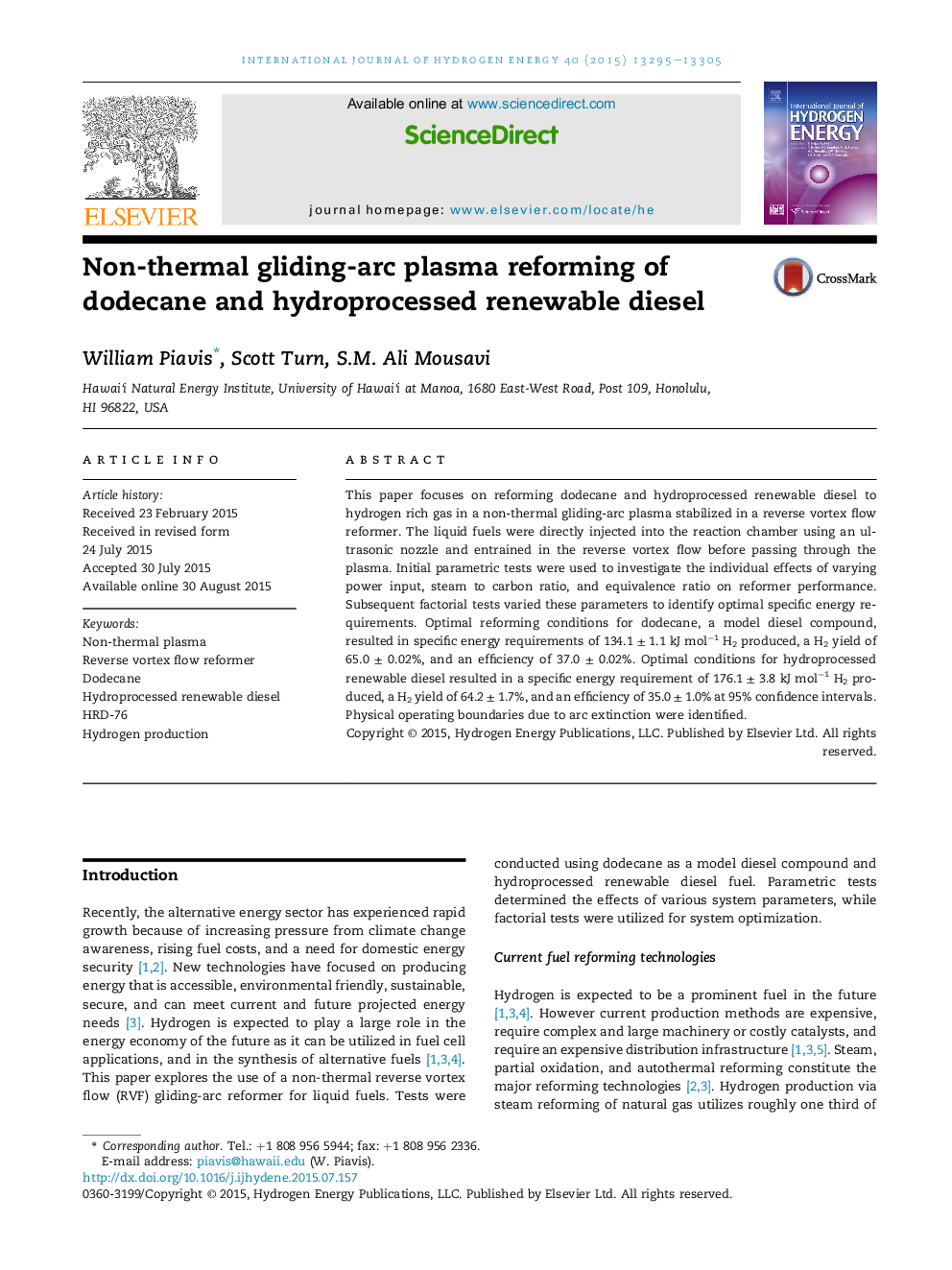| Article ID | Journal | Published Year | Pages | File Type |
|---|---|---|---|---|
| 1274623 | International Journal of Hydrogen Energy | 2015 | 11 Pages |
•Liquid HC fuels injected with an ultrasonic nozzle into a non-thermal plasma reformer.•Dodecane and hydroprocessed renewable diesel fuels were tested.•Reformer performance was optimized based on minimizing specific energy requirements.•Plasma power, equivalence ratio, and steam to carbon ratio effects investigated.
This paper focuses on reforming dodecane and hydroprocessed renewable diesel to hydrogen rich gas in a non-thermal gliding-arc plasma stabilized in a reverse vortex flow reformer. The liquid fuels were directly injected into the reaction chamber using an ultrasonic nozzle and entrained in the reverse vortex flow before passing through the plasma. Initial parametric tests were used to investigate the individual effects of varying power input, steam to carbon ratio, and equivalence ratio on reformer performance. Subsequent factorial tests varied these parameters to identify optimal specific energy requirements. Optimal reforming conditions for dodecane, a model diesel compound, resulted in specific energy requirements of 134.1 ± 1.1 kJ mol−1 H2 produced, a H2 yield of 65.0 ± 0.02%, and an efficiency of 37.0 ± 0.02%. Optimal conditions for hydroprocessed renewable diesel resulted in a specific energy requirement of 176.1 ± 3.8 kJ mol−1 H2 produced, a H2 yield of 64.2 ± 1.7%, and an efficiency of 35.0 ± 1.0% at 95% confidence intervals. Physical operating boundaries due to arc extinction were identified.
